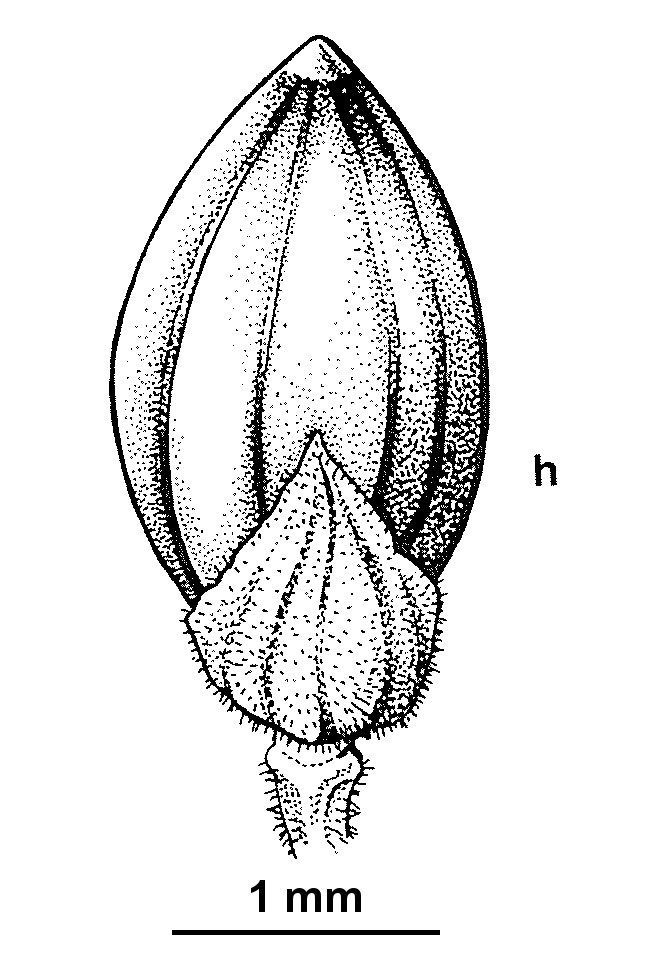Paspalidium gracile
(R.Br.) Hughes Slender PanicLoosely tufted, shortly rhizomatous perennial. Culms ascending or erect, to c. 30 cm high. Leaves sheaths glabrous or sparsely to moderately hairy; blade flat to inrolled, to 10 cm long and 4 mm wide when flattened, abaxially glabrous or with scattered hairs, adaxially more densely hairy than abaxially; ligule c. 1 mm long. Panicle 3–8 cm long; branches (mostly 5–10 mm long) remaining appressed to the pubescent main axis; pedicels loosely pubescent. Spikelets 2–3 mm long; lower glume smooth and glabrous, broadly ovate, c. 1.5 mm long, (3–)5-nerved, the nerves not coalescing; upper glume broad-elliptic, 7–9-nerved, 2–2.5 mm long, slightly shorter than the spikelet; lower lemma 5(–7)-nerved, 2–2.7 mm long, its palea rudimentary or lacking; upper lemma ovate, as long as the lower lemma or slightly exceeding it, minutely pointed apically, slightly constricted shortly above base, hardened, finely transversely ridged in the lower half, smooth near the apex, margins as hard as body, recurved; palea subequal to lemma, hardened, granular, slightly bulging above base. Flowers Oct.–Jan. (3 records)
MuM, MuF, EGU. All mainland states. In Victoria, confined to sandy and stony ground in dry woodlands and scrubs fringing rivers of the rain-shadow areas in East Gippsland (e.g. Suggan Buggan, Deddick and upper Snowy rivers), occasional plants collected along the Snowy River downstream towards Orbost are probably a result of flood-washed seed. A 1931 collection from the Werribee Research Farm may be of cultivated origin.
 Spinning
Spinning

